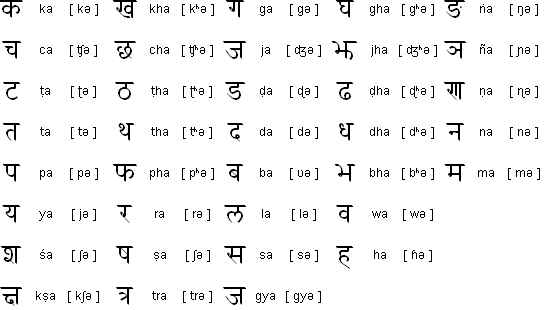
Benyonne Schwortz, bschwortz@gmail.com
Bayside High School, http://www.baysidehighschool.org
Modern Writers of Nepal
namaste. नमस्त
Appendix A4a Nepali Script
Nēpālī (नेपाली)
Nepali is an Indo-Aryan language with around 17 million speakers in Nepal, Bhutan, Burma and India. Nepali was originally known as Khas Kurā and was the language of the Khasa kingdom, which ruled over the foothills of what is now Nepal during the 13th and 14th centuries.
Nepali first started to be used in writing during the 12th century AD. It is written with the Devanāgarī alphabet, which developed from the Brahmi script in the 11th century AD.
Devanāgarī alphabet for Nepali
Vowels and vowel diacritics

Consonants

Numerals

Sample text in Nepali
![]()
Transliteration
Sabai vyaktiharū janmajāt svatantra hun tī sabaikō samān adhikār ra mahatva cha. Nijaharūmā vicāraśakti ra sadvicār bhaēkōlē nijaharūlē āpastmā bhrātr̥tvakō bhāvanābāṭ vyavahār garanu parcha.
Translation
All human beings are born free and equal in dignity and rights. They are endowed with reason and conscience and should act towards one another in a spirit of brotherhood.
(Article 1 of the Universal Declaration of Human Rights)
Thanks to Arvind Iyengar for providing the above sample text.
Source: http://www.omniglot.com/writing/nepali.htm